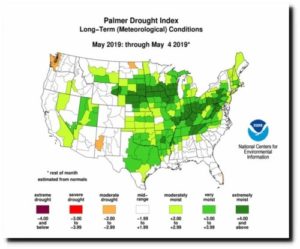by D. Siegel, Nov 29, 202 in Shortfall
…
…
The true tragedy
The problem isn’t the future. The problem is what we’re doing right now. Today, humans spend more than $1 trillion every year on decarbonization, which will most likely have no measurable effect on our future climate. But it does raise the price of energy, and the current virtue-signaling environment prevents people in the developing world from reaching the standard of living we take for granted.
Today, life expectancy in sub-Saharan Africa is 60 years — the same as it was in the United States in 1935. Today, about 60 percent of sub-Saharan people are farmers — the same as in the US in 1860. About 500 million people in Africa live in extreme poverty. According to the World Bank, half the countries in Sub-Saharan Africa have poverty rates higher than 35%.
And yet, that same World Bank won’t lend them money to build a reliable energy grid. The United Nations and the World Economic Forum are forcing Africans to install solar and wind projects that can’t help them cook dinner, so they continue to burn trees, charcoal, and dung, destroying forests and dying of lung diseases. They are — right now — being forced to live lives we lived in 1850.
Yes, you say, but prices of solar panels are coming down! Imagine you have a car that drives really well whenever the sun is shining or the wind is blowing. No batteries, nothing, it just works. It’s not even that expensive, and it is magically zero emission. Now, can you get rid of your regular car? Or do you need to have your own back-up car for whenever the sun isn’t shining or wind isn’t blowing? You might think you could just rent or use an Uber then, but that’s exactly when everyone else needs a car, too, so you actually have to maintain your existing car, pay the insurance, make sure it’s always available, for those times when your renewable car isn’t possible and the Uber is taken. That’s twice as many cars, no matter who owns them. That’s not “sustainability.”
…
…
Summary
As you have just learned, we live in the safest century to be alive. We are more protected against natural disasters than ever. And we are being lied to about CO2 and climate.
This isn’t easy for a lot of people to hear. It has become a matter of tribal and political identity. I know. In 1991, I wrote a book about how CO2 was changing the climate. But then I dug deeper and realized not everything was as it seemed. When I started to tell others the science wasn’t settled, I lost quite a few friends. If you have read this far, thank you for being brave. I invite you to take the next step at Climatecurious.com.
Resources
Wikipedia article on the Great Famine of 1876
A partial explanation of the ocean oscillations that caused the Great Famine of 1876
Climate and the Global Famine of 1876–78
Climate Curious — a resource for all to learn more about CO2 and climate.
How the British Empire exacerbated a rare climate event.
How the event was covered up (warning: very graphic images) …
…



